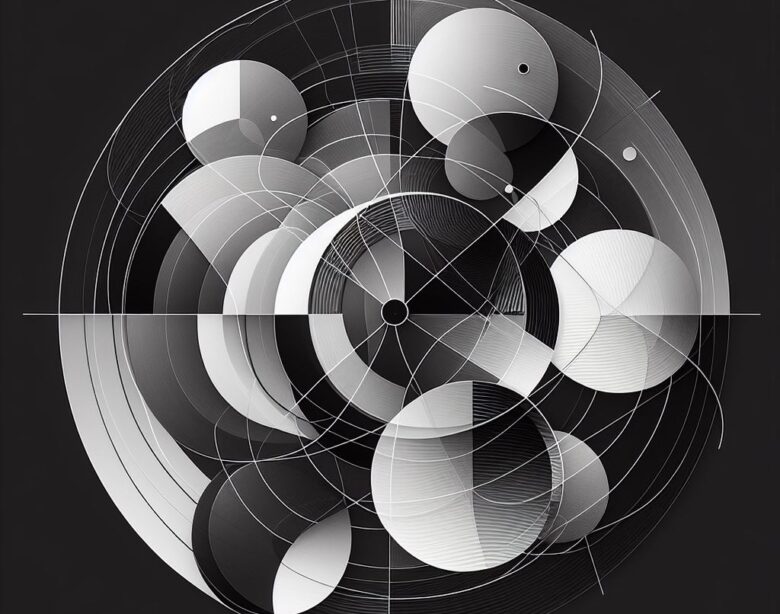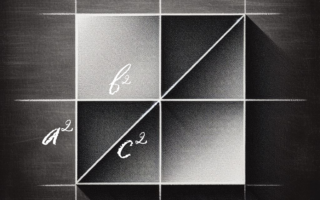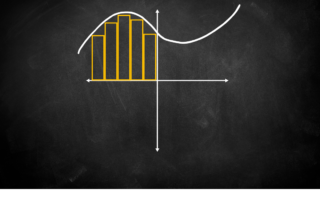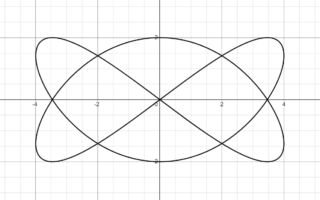The History and Mystery of Pi: From Ancient Babylon to Modern Mathematics
Pi, denoted by the Greek letter π, is perhaps one of the most famous and intriguing mathematical constants. Defined as the ratio of a circle’s circumference to its diameter, pi is an irrational number, meaning it cannot be expressed as a simple fraction and its decimal representation is non-terminating and non-repeating. The history of pi is a fascinating journey that spans thousands of years and involves contributions from many different cultures and mathematicians. Here we will explore the history of pi, from its humble beginnings in ancient Babylon to its modern-day significance in mathematics and beyond.
Ancient Babylon and Egypt
The earliest known approximations of pi date back to ancient Babylon and Egypt, where mathematicians and astronomers used simple geometric methods to estimate the value of pi. The Babylonians, around 1900-1600 BC, used a value of 3.125 for pi, which is remarkably close to the modern approximation of 3.14159. The Egyptians, around 1650 BC, used a value of 3.1605, also quite close to the modern value.
The concept of pi (π), the ratio of a circle’s circumference to its diameter, has intrigued mathematicians for millennia. While ancient Greece is often credited with early advancements in understanding pi, the contributions of mathematicians from ancient Babylon and Egypt are equally significant. In this blog post, we delve into the work of mathematicians from these ancient civilizations, exploring their unique approaches to pi and the lasting impact of their discoveries. .

Ancient Greece
The concept of pi as we know it today began to take shape in ancient Greece, where mathematicians such as Archimedes and Euclid made significant contributions to the understanding of pi. Archimedes, in the 3rd century BC, used a method of inscribed and circumscribed polygons to approximate the value of pi, calculating it to be between 3 1/7 and 3 10/71. Euclid, in his work “Elements,” also discussed the properties of circles and their relationship to pi.
In the realm of mathematics, few constants are as famous and mysterious as pi (π). The quest to understand pi has intrigued mathematicians for millennia, and perhaps no era pursued its secrets as fervently as ancient Greece.
Archimedes and the Method of Exhaustion: One of the most significant contributions to the study of pi in ancient Greece came from the renowned mathematician Archimedes. In his work “On the Measurement of the Circle,” Archimedes used a method of exhaustion to approximate the value of pi. By inscribing and circumscribing polygons around a circle, Archimedes was able to determine that pi is between 3 1/7 (approximately 3.1429) and 3 10/71 (approximately 3.1408), a remarkably accurate estimate for his time.
Euclid’s Geometric Insights: Euclid, known for his seminal work “Elements,” also made important contributions to the study of pi. In Book XII of the “Elements,” Euclid demonstrates that the area of a circle is proportional to the square of its radius, providing an indirect approach to understanding the value of pi. Although Euclid did not explicitly calculate the value of pi, his geometric insights laid the groundwork for later mathematicians to explore this concept further.
Other Greek Mathematicians: While Archimedes and Euclid are perhaps the most well-known, other ancient Greek mathematicians also contributed to the study of pi. For example, Antiphon of Athens and Hippocrates of Chios both attempted to approximate the value of pi using geometric methods. While their methods were not as sophisticated as those of Archimedes and Euclid, they nonetheless contributed to the growing body of knowledge about pi in ancient Greece.
Legacy and Influence: The work of ancient Greek mathematicians on the concept of pi has had a lasting impact on mathematics and science. Their innovative approaches to geometry and measurement laid the foundation for later developments in calculus and analysis. Today, pi is celebrated worldwide on March 14th (3/14), known as Pi Day, in honor of its importance in mathematics and its enduring legacy.
India and the Middle East
In India and the Middle East, mathematicians such as Aryabhata and Al-Khwarizmi continued to refine the understanding of pi. Aryabhata, in the 5th century AD, used a value of 3.1416 for pi in his astronomical calculations. Al-Khwarizmi, in the 9th century AD, also made significant contributions to the study of pi, further refining its value and developing new methods for approximating it.
Another notable Indian mathematician who contributed to the study of pi was Brahmagupta, who, in the 7th century AD, provided an approximation of pi as √10, or approximately 3.1622. Brahmagupta’s work was influential in the development of trigonometry and its applications in mathematics.
Al-Khwarizmi’s work laid the foundation for later mathematicians in the Islamic world, including Al-Biruni and Al-Tusi, who furthered the study of pi and its applications in mathematics and astronomy. These mathematicians made significant advancements in the calculation of pi and its use in various mathematical and scientific contexts.
Today, the contributions of these mathematicians are celebrated for their ingenuity and their role in shaping our understanding of pi and its significance in the world of mathematics. Their work serves as a testament to the enduring legacy of mathematical inquiry and the importance of diverse perspectives in advancing our understanding of the natural world.

Far East
In the Far East, particularly in China and Japan, mathematicians also made significant contributions to the study of pi. The Chinese mathematician Zu Chongzhi, in the 5th century AD, calculated pi to an impressive accuracy of seven decimal places, using a polygonal method similar to that of Archimedes.
In Japan, mathematicians such as Yoshio Mikami and Seki Takakazu furthered the study of pi and its applications in mathematics. Seki Takakazu, in particular, made significant advancements in the field of algebra and geometry, which had implications for the calculation of pi.
Europe and the Renaissance
During the Renaissance, a period marked by intellectual and artistic revival in Europe, the study of mathematics experienced a renaissance of its own. One of the most intriguing and challenging mathematical constants of the time was pi (π), the circle constant.
Fibonacci and the Liber Abaci: One of the earliest European mathematicians to contribute to the study of pi was Leonardo Fibonacci, an Italian mathematician who introduced the Hindu-Arabic numeral system to Europe in his book Liber Abaci (Book of Calculation). In this seminal work, Fibonacci used an approximation of pi as 3.1418, a significant improvement over earlier approximations.
Viète’s Infinite Product: In the 16th century, French mathematician François Viète made significant advancements in the study of pi. He derived an infinite product involving square roots that converges to pi, known as Viète’s formula. This formula was a remarkable achievement at the time and provided a new method for approximating pi.
Ludolph van Ceulen and the Ludolphine Number: Perhaps the most famous contribution to the study of pi during the Renaissance came from Dutch mathematician Ludolph van Ceulen. In the late 16th and early 17th centuries, van Ceulen calculated pi to an astonishing 35 decimal places using a polygonal method similar to that of Archimedes. This value of pi became known as the Ludolphine Number in his honor.
The study of pi in Renaissance Europe was a testament to the intellectual curiosity and mathematical prowess of the time further refining the work of earlier mathematicians and expanding it to new limits

Modern Mathematics
In modern times, the study of pi has continued to fascinate mathematicians and scientists. The advent of computers has allowed for the calculation of pi to billions of decimal places, revealing its truly infinite and non-repeating nature. Pi has also found applications in fields beyond mathematics, including physics, engineering, and even art and music.
Pi (π), while simple in its definition as the mathematical constant representing the ratio of a circle’s circumference to its diameter, has long fascinated mathematicians due to its irrational nature and seemingly endless decimal expansion. While ancient and Renaissance mathematicians made significant contributions to understanding pi, modern mathematicians continue to explore its properties and push the boundaries of computation.
Computing Pi to Record Digits: One of the most notable achievements in modern pi computation is the calculation of its digits to record lengths. In 2019, a team led by Emma Haruka Iwao set a new world record by calculating pi to 31.4 trillion digits using the y-cruncher software on Google Cloud. This remarkable feat demonstrates the power of modern computing technology in exploring the depths of pi’s decimal expansion.
Pi in Quantum Mechanics: Pi also plays a crucial role in modern physics, particularly in quantum mechanics. The Bohr radius, which represents the most probable distance between the nucleus and the electron in a hydrogen atom, is related to pi through fundamental physical constants. This connection highlights the deep relationship between pi and the fundamental properties of the universe.
Pi in Randomness and Chaos Theory: Pi has also found applications in the study of randomness and chaos theory. The distribution of the digits of pi is believed to be statistically random, making it a useful tool for testing random number generators. Pi also appears in the formulas that describe chaotic systems, highlighting its role in understanding the complex behavior of chaotic systems.
Pi in Art and Culture: Beyond its mathematical and scientific significance, pi has also captured the imagination of artists and writers. The irrationality and transcendental nature of pi have inspired numerous works of art, literature, and music, reflecting its enduring appeal and cultural significance.
The study of pi continues to be a rich and fertile field of exploration for mathematicians, scientists, and artists alike. From its ancient origins to its modern applications, pi has proven to be a constant source of fascination and inspiration, highlighting the deep connections between mathematics, science, and culture. As we continue to unlock the mysteries of pi, we gain a deeper understanding of the fundamental nature of the universe and our place within it.
The history of pi is a testament to the ingenuity and curiosity of humanity. From its humble beginnings in ancient civilizations to its modern-day significance, pi has captured the imagination of mathematicians and scientists for centuries. As we continue to explore the mysteries of the universe, pi will undoubtedly remain a constant companion, guiding us in our quest for knowledge and understanding.
Please Visit Our Sponsors:
We only support vendors that we use ourselves in our home. The links below are our own links or affiliate links but know that we use all of these now, or have in the past. As the author/creator of this blog, I also tutor mathematics on Wyzant, sell on Etsy, create content on TpT, and learn Korean on Rosetta Stone.





